South Africa - Suikerbosrand and Johannesburg
- Mike Timmons
- Aug 24
- 7 min read
8/25/2025
A year after my incredible Capetown Trip, I am back in South Africa. This time, Carmen came along - kinda. We are splitting this trip. Carmen and I are spending the first half of the trip doing separate things. I will be heading down to the Drakensberg Mountains to chase some birds on my "must-see" list. Carmen is going to spend her time in the Johannesburg area visiting various museums and sites related to Nelson Mandela and the history of the city. Before that, though, we are going to spend a day together trying to acclimate to the time zone change.
It is a 16 hour flight from Atlanta to Johannesburg. We got in late on the 24th. As we always arrive a day early for scheduled trips, we needed something to fill our day. The last thing we wanted was to sleep through the day. I did not have much time for research where to bird. From what I saw, it seemed like the best location might be Suikerbosrand, an area just outside the city. After reaching out to several places, I was put in contact with Selwyn Rautenbach and arranged a day of birding with him.
Selwyn picked us up from the hotel airport around 5:30 in the morning. We had managed roughly six hours of sleep and were not feeling too bad. Selwyn had asked about targets prior to the trip, but I did not have much to give him. The problem is that it is hard to tell exactly what birds are available in an area at a given time of year. To complicate things, most South African birders do not use eBird. They use the Bird Atlas database and log sighting through Birdlasser. All of which I knew nothing about at the time. I had seen a few birds from trip overviews of the area and settled on a general list of: Orange River Francolin (an endemic bird) and Violet-eared Waxbill (a stunningly beautiful species). At least my lackluster list gave him plenty of latitude. In all honesty, I rarely have target species to give a guide. I just rely on them to be the expert for the area and to show me what the area has to offer. This is exactly what Selwyn did for us.
The general plan was to hit Suikerbosrand Nature Reserve and then slip over to Marievale Bird Sanctuary. We started on the outskirts of Suikerbosrand; hitting up some grassland areas in search of the francolin. We are in South Africa just at the end of winter. This, unfortunately, means that none of the birds are in breeding plumage. This is a shame, because there are Long-tailed Widowbirds everywhere. It would have been a sight to see them flying around in breeding plumage. The area is exactly the type of habitat I love. Long stretches of grassland in every direction. Small birds are flushing up everywhere as we drive along the dusty road. African Stonechat, various species of cisticola (little brown birds usually best differentiated by voice), Orange-throated (Cape) Longclaw, Zebra (Orange-breasted) Waxbill, Capped Wheatear, and Red-billed Quelea are popping up and diving for cover as we drive along. The tough part was that we were facing into the sun for most of the drive. We also had our first mammal encounter out here. In the distance, a Red Hartebeest strolled off across the grasslands.
We tried a few locations, but we could not find a francolin that morning. Driving between locations, we had a few new birds along the roads. The area out here is primarily agriculture, and the fields attract a number of birds. South African Swallow had just returned and were busily flying over the fields. Blacksmith Lapwing, Southern Red Bishop, Crowned and Wattled Lapwing, Helmeted Guineafowl, Swainson's Spurfowl, Pin-tailed Whydah, and Eastern Clapper and Spike-heeled Lark were some of the highlights.
After searching for the francolin, we headed into the park proper and started birding. Our route would take us up through the park and some light forest to higher rocky ground before looping back to the start of the park. Even at the gate, we had some new sightings. Last time I was in South Africa, I was a bit disappointed that I did not get a better shot of a Speckled Pigeon. So, you can bet that I put in some time to capture a few shots of the birds I saw at the gate. Of course, I would end up seeing plenty throughout the trip, but you just never know. Along the same lines, I was eager to photograph the Cape Starling there. The sun is getting a bit high at this point, but I am shooting anyway. I have not been on the right light angle for most of the morning; so, a bit of harsh light is not going to stop me now. White-browed Sparrow-Weaver were building a nest nearby, and there were a few more Capped Wheatear and a Rufous-naped Lark, as well.
There was a pond nearby, and we checked it out. Blesbok and Common Reedbuck were feeding in the water. As we stood there, the Common Reedbuck wander across the pond and practically walked up to the fence in front of us. There was not much on the water other than some Red-knobbed Coot, a Long-tailed Cormorant, and some White-throated Swallow flying over.

We pulled into a small picnic area and were immediately overwhelmed with the birds in the area. Carmen and I saw a huge black-and-rufous bird fly up onto a sign and then disappear. Luckily, we saw another a little bit later, and Selwyn let us know it was a Mocking Cliff-Chat. Rufous-throated Wryneck was calling from some nearby trees. Brubru quickly established itself as my nemesis bird for this trip. Several were heard calling from the area, but we never laid eyes on any of them. More Mountain Wheatear were perching about, while Karoo Thrush skulked through the shrubs. We had good looks at some distant Black-collared Barbet; such a beautiful bird. White-breasted Sunbird was singing frequently, and Cape White-eye were bouncing around in the trees. Most of the birds were impossible to shoot, and I quickly settled for just seeing what I could.
We left the picnic area and started a long drive up through some higher rocky areas. We passed a number of overlooks with large mixed herds of mammals. Plains Zebra, Black Wildebeest, Springbok, and more Blesbok were common sights. We were doing a lot more birding from the car through the middle part of the day. That combined with the harsh lighting made pictures impossible. As we hit the higher areas, we had a number of cisticola species: Rock-loving, Piping, Wailing, Levaillant's, and Wing-snapping. We had brief looks at an absolutely gorgeous Black-faced Waxbill. Swifts were returning, and we were looking at a flock of Little Swift when I noticed something odd. The white wrapped around the rump a bit. It was right then that Selwyn called out that they were Horus Swift; his first of the year. Looking at them, you could just make out the small forks in the tails as they flew and banked. We would later add actual Little Swift to the list. We pulled up to an area, and Selwyn had a White-browed Scrub-Robin. I had studied some before the trip and remembered this species. I commented that I expected the bird to have more streaking. He took a second look and said that was because it was actually a Kalahari Scrub-Robin - a species I did not even recall from studying.
We finally hit an area that was good for Violet-eared Waxbill. After checking a few locations, Selwyn located a female. Mostly plain with a beautiful but subtle lavender coloration, she is not what I had hoped for, but I was happy to see her. Selwyn said I should have been careful to specify I wanted to see a male, which I found pretty funny.
As we worked our way back down to the gate, Selwyn started asking what ducks I needed for South Africa. We had done well with ducks on the Cape Town trip. So, the answer was "none", really. With that in mind, Selwyn suggested that we skip Marievale and head into Johannesburg, instead. He had a few things there to show me. Among them was a Red-chested Flufftail that was being seen at Albert's Farm. There is not really a good way to put this into perspective. A flufftail is an extremely skulky bird. If you are a US birder, think Yellow Rail. Now try to imagine a Yellow Rail walking around in the open under a heavily trafficked footbridge over a creek at a public park. It was pretty incredible.
Common Bulbul and Little Rush Warbler were flitting around the creek with the flufftail. As we walked back to the car, we had a pair of Grosbeak Weaver pop up in a tree next to the car. Selwyn took us to a nearby tree where a juvenile Black Sparrowhawk was still sitting in its nest.
We left the park and checked a few other areas around town with little success. We tried a local neighborhood for African Harrier-Hawk, but the nest was empty, and the birds were nowhere to be found. We hit a park that overlooked the city to look for Verraux's Eagle, but missed out on them too. From there, we made a last minute drive out to the edge of town. Selwyn had one last area to check for Orange River Francolin. The sun had just set as he pulled into an area that looked a bit rundown. A two guys walking by sharing a bottle in a paper bag type area. Selwyn played for the bird a couple of times without response. We were just about to give up when we heard a bird respond. He and I looked at each other and knew it was way to distant to chase. Not at this hour and not in this area. It had to be a 100 yards away from the road. We stood there looking at each other and then a bird called from right behind us. It circled around us and slowly approached; calling all the way. The light was way too low, but I pumped up the ISO and hoped I could hold still enough to capture the bird. For a random target bird, it is a beautiful bird and provided for a dramatic end to the day.
Selwyn drove us back to the hotel from there. It had been a long but good day. Even better, we stayed awake the whole day. At the hotel, we grabbed a late dinner and then got things packed up for our solo trips the next morning. We would be saying goodbye for the next 5 days. We finished the day with 96 species of birds and around 12 species of mammals and lizards. Not a bad start to the trip. Up next, the Drakensberg Mountains!
Thanks for reading,
Mike





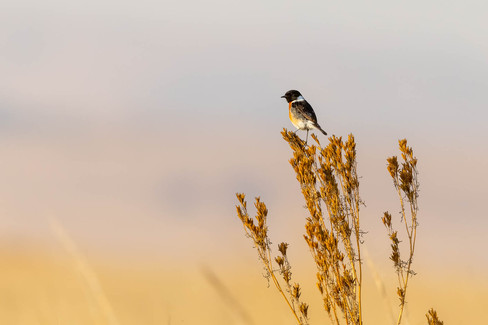











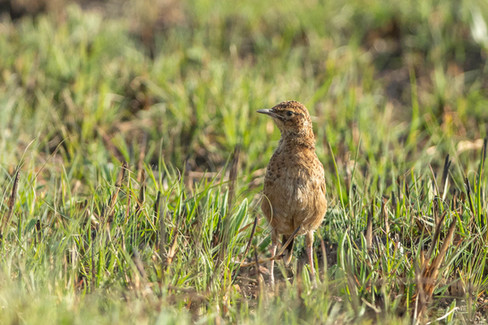
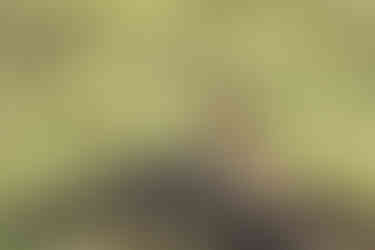
































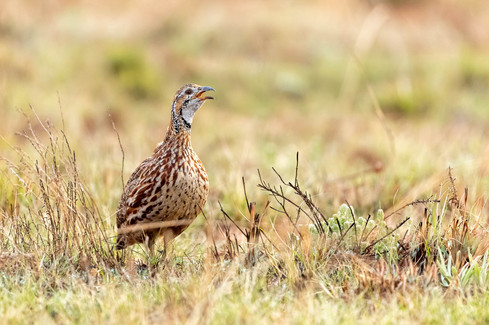





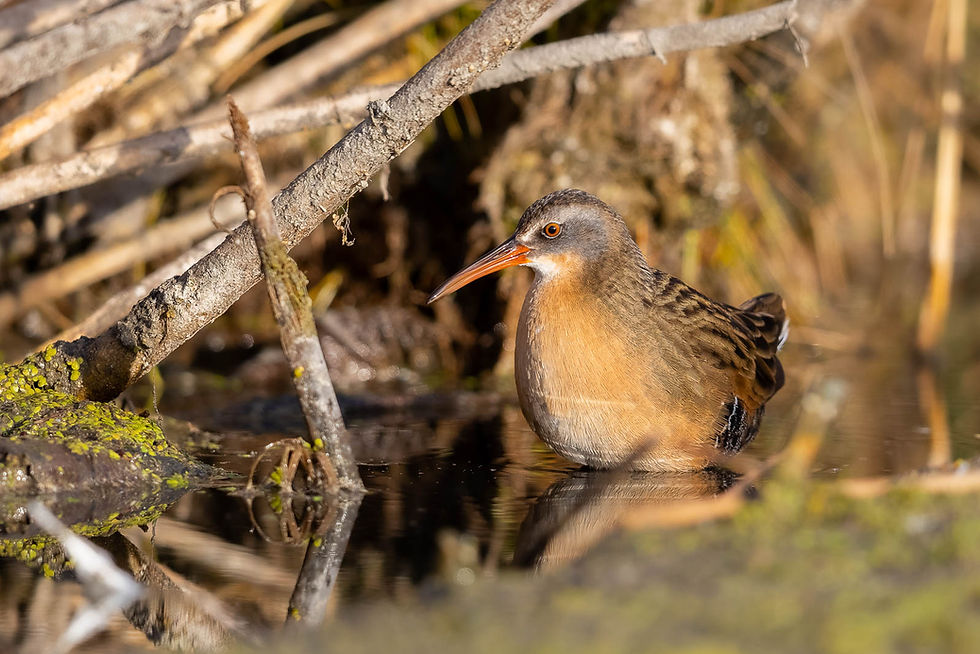

Comments